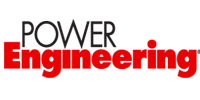 A new cooperative integration of AutoGrid Flex energy management with sonnenBatterie energy storage systems will enables energy project developers to better monetize the flexible capacity of distributed energy resources.
A new cooperative integration of AutoGrid Flex energy management with sonnenBatterie energy storage systems will enables energy project developers to better monetize the flexible capacity of distributed energy resources.
San Francisco Bay Area-based AutoGrid Systems, and German battery integrator sonnen have partnered to help energy project developers, utilities and other energy service providers better manage, optimize and aggregate sonnen’s battery systems and other distributed energy resources (DERs). The agreement will fully integrate AutoGrid Flex energy management capabilities with sonnen’s residential and commercial energy storage technology systems.
Among flexibility value streams that may be enhanced through the partnership are: optimizing self-consumption in real time across multiple factors including peak demand charges and time-varying prices; participating in utility demand response and resource adequacy programs; and creating a virtual power plant to participate in wholesale capacity, energy and ancillary services markets.
AutoGrid applications are all built on the AutoGrid Energy Internet Platform (EIP), with patented Predictive Controls technology that leverages petabytes of smart meter, sensor and third-party data, along with powerful data science and high-performance computing algorithms, to monitor, predict, optimize and control the operations of millions of assets connected across global energy networks.
The AutoGrid Flex application suite provides advanced forecasting, real-time controls and scalable architecture to manage large numbers of distributed sonnenBatterie systems in combination with other DERs. This fleet management is key to optimizing the utilization of battery storage capacity for both the local site and the regional grid network, and AutoGrid Flex is already integrated with multiple wholesale markets, including CAISO, PJM and ERCOT, and underpins several of the world’s leading utility DER systems.
Designed to optimize all DER asset categories including distributed generation, battery storage, and demand response resources, AutoGrid Flex provides out-of-the-box support for all prevalent grid services and wholesale market programs spanning all customer segments – residential, commercial and industrial – through its three main applications: AutoGrid DROMS, an enterprise-grade demand response management system; AutoGrid DERMS, a distributed energy resource management system (DERMS) for providing targeted distribution-level grid-services; and AutoGrid VPP, a virtual power plant (VPP) solution for participation in wholesale markets.
Click Here to Read Full Article
read more
 NEC Energy Solutions, a subsidiary of NEC Corporation, announced that it is supplying the Sterling Municipal Light Department (SMLD) of Sterling, Massachusetts, with a 2MW, 3.9 MWh energy storage solution.
NEC Energy Solutions, a subsidiary of NEC Corporation, announced that it is supplying the Sterling Municipal Light Department (SMLD) of Sterling, Massachusetts, with a 2MW, 3.9 MWh energy storage solution. A new report published by Allied Market Research titled, Energy Storage Systems Market by Technology, End-User, and by Application-Global Opportunity Analysis and Industry Forecast, 2014-2022, projects that the world energy storage systems market is expected to reach
A new report published by Allied Market Research titled, Energy Storage Systems Market by Technology, End-User, and by Application-Global Opportunity Analysis and Industry Forecast, 2014-2022, projects that the world energy storage systems market is expected to reach  Part I: Texas assumes a leading role in defining the value of storage
Part I: Texas assumes a leading role in defining the value of storage REDWOOD CITY, CA–(Marketwired – Oct 12, 2016) –
REDWOOD CITY, CA–(Marketwired – Oct 12, 2016) –  Critics called 2015
Critics called 2015  Outsiders could be forgiven for thinking that UK energy policy has abandoned renewables — consider the high-profile commitment to nuclear at Hinkley Point, and the Cameron government’s attack on feed in tariffs. It’s less well known that industry and government alike are taking a hard look at the possibilities for
Outsiders could be forgiven for thinking that UK energy policy has abandoned renewables — consider the high-profile commitment to nuclear at Hinkley Point, and the Cameron government’s attack on feed in tariffs. It’s less well known that industry and government alike are taking a hard look at the possibilities for A Dutch startup called LeydenJar is boldly going where no one else in the energy storage field has apparently gone before. The company, a spinoff from the Energy Research Centre of the Netherlands, has come up with a new version of lithium-ion battery technology that uses 100% silicon instead of graphite.
A Dutch startup called LeydenJar is boldly going where no one else in the energy storage field has apparently gone before. The company, a spinoff from the Energy Research Centre of the Netherlands, has come up with a new version of lithium-ion battery technology that uses 100% silicon instead of graphite. We often hear that energy storage is a few years behind the solar industry. Comparing these industries’ respective trade shows helpfully illustrates this point.
We often hear that energy storage is a few years behind the solar industry. Comparing these industries’ respective trade shows helpfully illustrates this point. As the demand for clean energy rises, so too has the demand for energy storage. Batteries and other storage products extend the ability of renewable energy systems to provide clean power when the sun isn’t shining or the wind isn’t blowing. In the last few years, Aquion Energy introduced innovative, saltwater-based electrochemical batteries. Recently Aquion commissioned its first battery system in Africa. Together with
As the demand for clean energy rises, so too has the demand for energy storage. Batteries and other storage products extend the ability of renewable energy systems to provide clean power when the sun isn’t shining or the wind isn’t blowing. In the last few years, Aquion Energy introduced innovative, saltwater-based electrochemical batteries. Recently Aquion commissioned its first battery system in Africa. Together with
Recent Comments